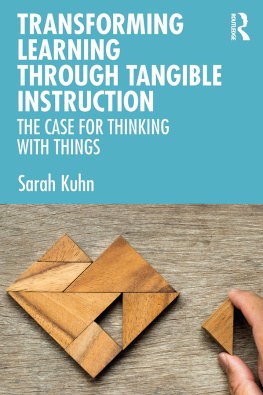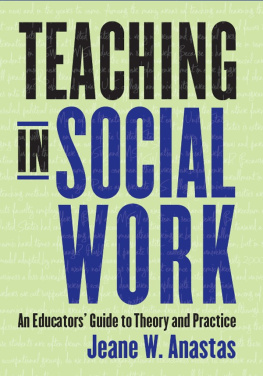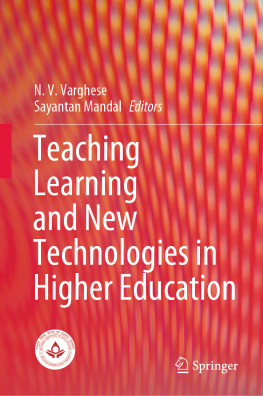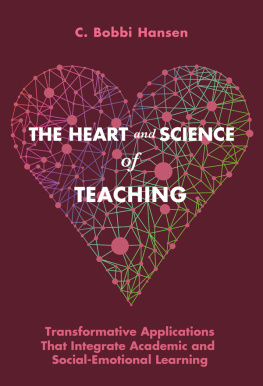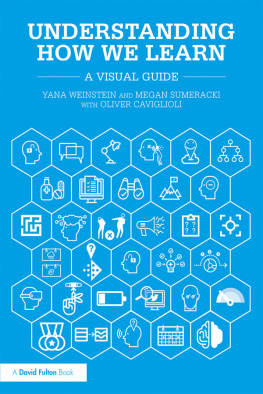Transforming Learning Through Tangible Instruction
Transforming Learning Through Tangible Instruction offers a transformative, student-centered approach to higher education pedagogy that integrates embodied cognition into classroom practice. Evidence across disciplines makes clear that people learn with their bodies as well as their brains, but no previous book has provided evidence-based guidance for adopting and refining its practice in colleges and universities. Collecting findings from cognitive science, educational neuroscience, learning theories, and beyond, this volumes unique approachradical yet practical, effective yet low-costwill have profound implications for higher education faculty and administrators engaged in teaching and learning. Seven concise chapters explore how physical objects, hands-on making, active construction, and other elements of body and environment can enhance comprehension, memory, and individual and collaborative learning.
Sarah Kuhn is Professor Emerita in the Department of Psychology at the University of Massachusetts Lowell, USA. Before beginning her thirty-year teaching career, she received a PhD in Urban Studies and Planning from the Massachusetts Institute of Technology and a Bachelor of Arts in Philosophy and Social Psychology from Harvard University. She is the author of numerous articles, including several on aspects of learning with things in interdisciplinary, studio-based, and community settings.
Transforming Learning Through Tangible Instruction
The Case for Thinking With Things
SARAH KUHN

First published 2022
by Routledge
605 Third Avenue, New York, NY 10158
and by Routledge
2 Park Square, Milton Park, Abingdon, Oxon, OX14 4RN
Routledge is an imprint of the Taylor & Francis Group, an informa business
2022 Taylor & Francis
The right of Sarah Kuhn to be identified as author of this work has been asserted by her in accordance with sections 77 and 78 of the Copyright, Designs and Patents Act 1988.
All rights reserved. No part of this book may be reprinted or reproduced or utilised in any form or by any electronic, mechanical, or other means, now known or hereafter invented, including photocopying and recording, or in any information storage or retrieval system, without permission in writing from the publishers.
Trademark notice: Product or corporate names may be trademarks or registered trademarks, and are used only for identification and explanation without intent to infringe.
Library of Congress Cataloging-in-Publication Data
Names: Kuhn, Sarah, author.
Title: Transforming learning through tangible instruction : the case for thinking with things / by Sarah Kuhn.
Description: New York, NY : Routledge, 2021. | Includes bibliographical references and index. |
Identifiers: LCCN 2021015671 (print) | LCCN 2021015672 (ebook) | ISBN 9780367652708 (hardback) | ISBN 9780367653538 (paperback) | ISBN 9781003129073 (ebook)
Subjects: LCSH: College teaching. | Active learning. | Human body in education. | Student-centered learning. | Cognitive neuroscience.
Classification: LCC LB2331 .K84 2021 (print) | LCC LB2331 (ebook) | DDC 378.1/25dc23
LC record available at https://lccn.loc.gov/2021015671
LC ebook record available at https://lccn.loc.gov/2021015672
ISBN: 978-0-367-65270-8 (hbk)
ISBN: 978-0-367-65353-8 (pbk)
ISBN: 978-1-003-12907-3 (ebk)
Typeset in Bembo and Avenir
by Apex CoVantage, LLC
To my Teachers
(in order of appearance)
Kay and Tom
Liza and Nat
Don and Ben
Ralph and Jane
Emma and Sam
Contents
Guide
In a sense, this work has been underway since I first built structures with wooden blocks in my childhood playroom. I have incurred a lifetime of debts along the way. I am deeply grateful to all of you, named and unnamed.
For important and sustained conversations over the years, I want to thank Jeanne Bamberger, Mary Catherine Bateson, Diana Coluntino, Bruce Corson, Judith Davidson, Ron Eglash, Ann Enkoji, Mitchell Kapor, Fred Martin, Lise Motherwell, Robert Rasmussen, Ellen Schn, Carol Strohecker, and Sherry Turkle.
I am also grateful to many who showed their enthusiasm for this project through conversations, invitations to present, feedback, and other forms of support. I want to particularly mention Marsha Brofka-Berends, Scott Bultman, Dale Dougherty, Elizabeth Branch Dyson, Chris Hansen, Mark Johnson, Sheila Kirschbaum, David Kuhn, Jehane Kuhn, Judy Kuhn, Robert Kunzendorf, June Lemen, Caitrin Lynch, Alex Ruthmann, Kristina Lamour Sansone, John Schumacher, Barbara Walker, and John Wooding.
Several groups were also important to the formation of my ideas: the Thinking With Things Faculty Learning Community; the Center for Women and Work Faculty Associates; and the members of the Lowell Tex project, all at the University of Massachusetts Lowell, as well as the participants in Conversing with Materials conversations.
Critical support came from the National Science Foundation EAGER grant (Award # IIS-1042580) and Mary Lou Maher, and from sabbaticals spent at the Radcliffe Institute for Advanced Study and the Franklin W. Olin College of Engineering.
Thanks to Daniel Schwartz at Routledge, the editor any author would be fortunate to have, and to two anonymous reviewers.
For sustaining me on the very long road that has been this book, I am deeply grateful to Sarah Fletcher, Jack Grady, Karen Hampton, Jane Kite, Liza Kuhn, Nat Kuhn, Ralph LaChance, Barbara Lipski, Evelyn Smith Scally, Astrig Tanguay, Amy Totenberg, and my wonderful children, Emma and Sam LaChance. My writing accountability groupMarlowe Miller and Judith Davidsonhave been especially important in giving me strength for the journey.
Finally, I want to thank my students, from whom I have learned so much.
Id like to invite you into a classroom, a typical room at my typical university. Ive been teaching for more than 25 years and have used scores of different classrooms around our campus; almost all of them are like the one Im about to show you.
Your first impression will be of beige. Beige chairs with a single broad arm for notebooks, all facing the teachers spot at the front of the room. Beige tile flooring, beige walls with nothing much on them except the requisite whiteboard on one wallor two walls if I am lucky. A wooden podium in front has a bunch of electronic gear so I can show PowerPoint slides, or an image from the web, or a video on the white pull down screen. Even the digital projector fastened to the ceiling is tan against the off-white acoustical tile. There are green trees outside the window, but the beige blinds are usually pulled down so that I can use the projector without competition from daylight.
The classroom Ive described is so common on campuses today that it hardly rates a mention. Its standard issue, and so is the way of teaching that it supports. Almost any student in America, walking into this room, will immediately know what is expected of them: sit down, take out your notebook, and wait for the professor to begin. Likewise, this room tells me, the professor, what is expected of me. I am to be the center of attention, up front at my podium, and all the learning that happens in this space will be dispensed by me. The tools I have at my disposal are a whiteboard and a computer for projecting images. The students have their notebooks. Why would we need anything more?

